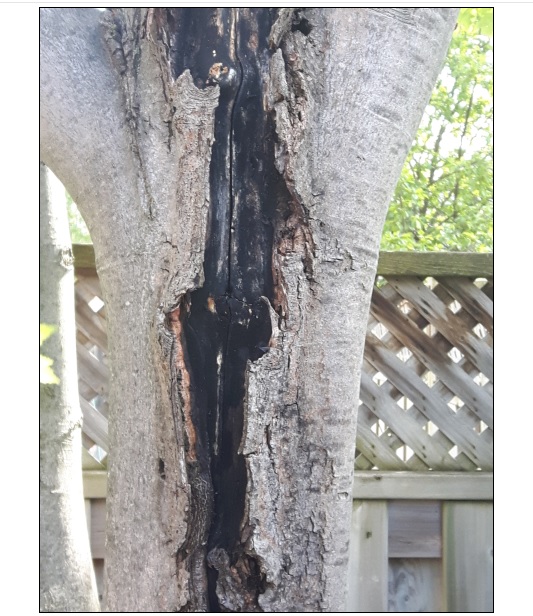
I have two maple trees in my backyard that has begun to spit in the middle. These trees were planted in 2003 and are in direct sunlight. The cracks you are seeing in the attached image started happening about 3 or 4 years ago. At the time, we thought it was nothing until it started expanding. Other than that, both trees appear to be quite healthy and sprout leaves each spring.
Is there a way to treat these trees and if so, how? The idea of cutting these trees down is unfathomable to me.
Type of soil: There may be remnants of clay since the area we live in was a farmers field and subdivision was created back in 2001.
Climate Zone: Not sure but we live in Aurora, Ontario so, I image this mirrors the temperature across many parts of Canada
In advance, thank you for your help and advice.
Jeremy
Thank you for contacting the Toronto Master Gardeners.
It is not a surprise that the tree you are inquiring about is a maple. Thin barked trees such as sugar maples, fruit trees, beech and honey locust to name a few, are susceptible to splits and fissures. Cracks and splits in tree trunks are actually not uncommon and are usually not a major threat to the tree.
According to Cornell University , cracks and splits most often occur due to cold temperatures. These frost cracks occur when the inner and outer wood in the tree’s trunk expands and contracts at different rates when the temperature changes. They often originate at a point in the trunk where the tree has been injured in the past and most often occur in maples.
While there is not much you can do for a crack like the one you have shown in your photo, what I would suggest is giving the tree the best conditions to continue growing healthily. Top dressing the base of the tree with compost and providing it with water during drought periods would be beneficial.
That being said, from your second photo the bark damage is quite extensive and could lead to many problems including pests. When a large tree is struggling it should definitely be seen by a certified arborist. There are so many parameters and issues that could be at play here. It will take a trained eye on sight to diagnose the cause of the problem and decide what options are available to you.
You can find a certified arborist on the Landscape Ontario site:
https://landscapeontario.com/search?lat=44.0383744&lng=-79.1999949&query=Arborists%2FTree+Care
or on the International Society of Arboriculture (ISA) site ( they have an Ontario Chapter) https://www.treesaregood.org/findanarborist/findanarborist
Good Luck!

